Worksheet: How Nature Works in Harmony | Worksheets with Solutions for Class 8 PDF Download
| Table of contents |

|
| Multiple Choice Questions (MCQs) |

|
| Fill in the Blanks |

|
| Very Short Answer Questions |

|
| Short Answer Questions |

|
| Match the Following |

|
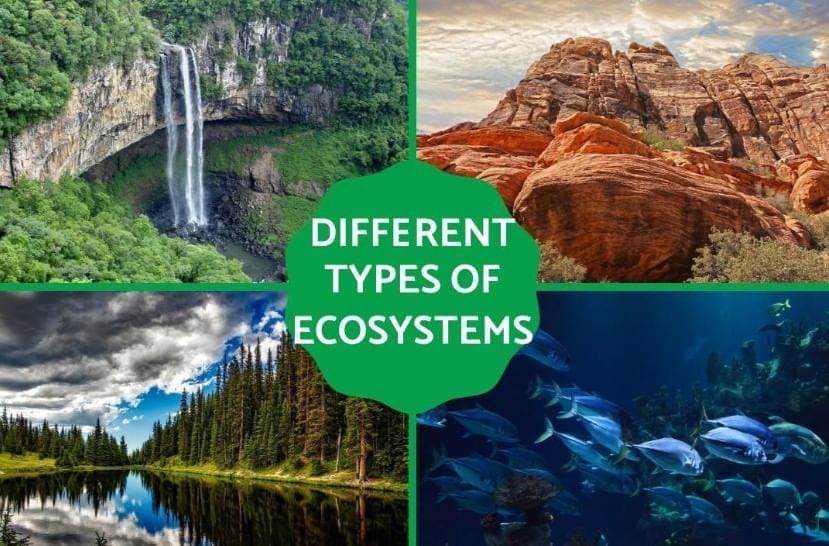
Multiple Choice Questions (MCQs)
Instruction: Select the correct option for each question.
Q1. What is a habitat?
a) Only the place where animals hunt
b) The place and conditions where an organism lives and survives
c) A community of only plants
d) Only the climate of an area
Q2. Which pair correctly shows biotic and abiotic components?
a) Soil (biotic), fish (abiotic)
b) Sunlight (biotic), bacteria (abiotic)
c) Tree (biotic), sunlight (abiotic)
d) Frog (abiotic), air (biotic)
Q3. A population is best defined as:
a) All living and non-living things in an area
b) Different species living together
c) Members of the same species in a given area and time
d) All plants in all habitats
Q4. Pollination is the transfer of:
a) Seeds from fruit to soil
b) Pollen from stamen to carpel
c) Roots to shoots
d) Water to leaves
Q5. Which sequence correctly shows a food chain?
a) Snake → Eagle → Grasshopper
b) Grass → Hare → Tiger
c) Eagle → Snake → Frog → Grasshopper
d) Frog → Grass → Grasshopper
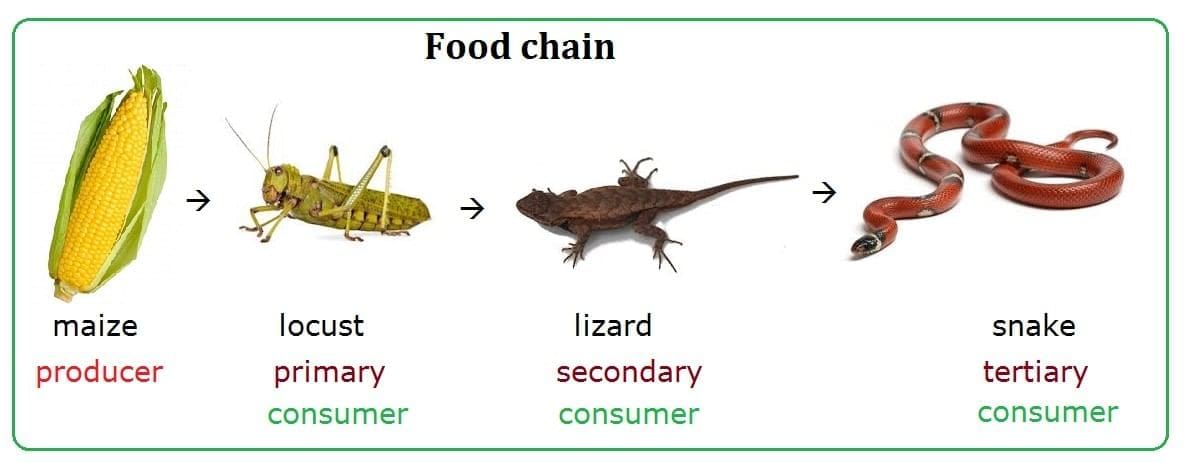
Fill in the Blanks
Instruction: Fill in the blanks with the correct word based on the chapter.
Q1. Interconnected feeding relationships form a __________.
Q2. Organisms like fungi and bacteria that break down dead matter are called __________.
Q3. The position of an organism in a food chain is its __________ level.
Q4. Cutting too many trees and pollution can disturb __________ balance.
Q5. Areas like national parks and sanctuaries are set aside as __________ areas.
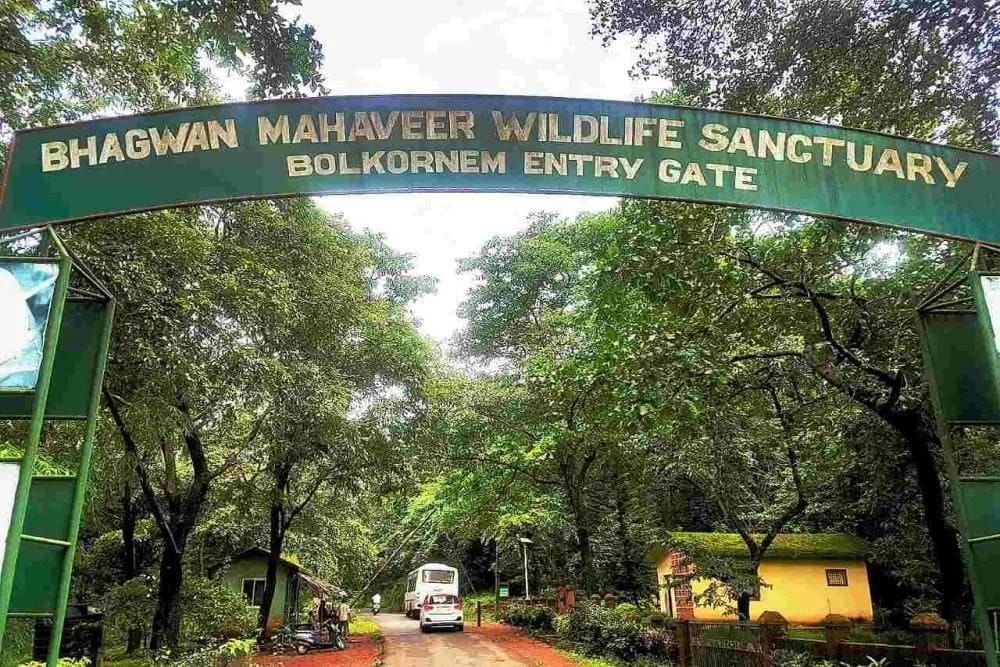 Entrance of a Wildlife Sanctuary
Entrance of a Wildlife Sanctuary
Very Short Answer Questions
Instruction: Answer the following questions in one line.
Q1. Define habitat.
Q2. What is pollination?
Q3. Name the three main consumer types.
Q4. Who are decomposers? Give one example.
Q5. What is one role of migratory birds?
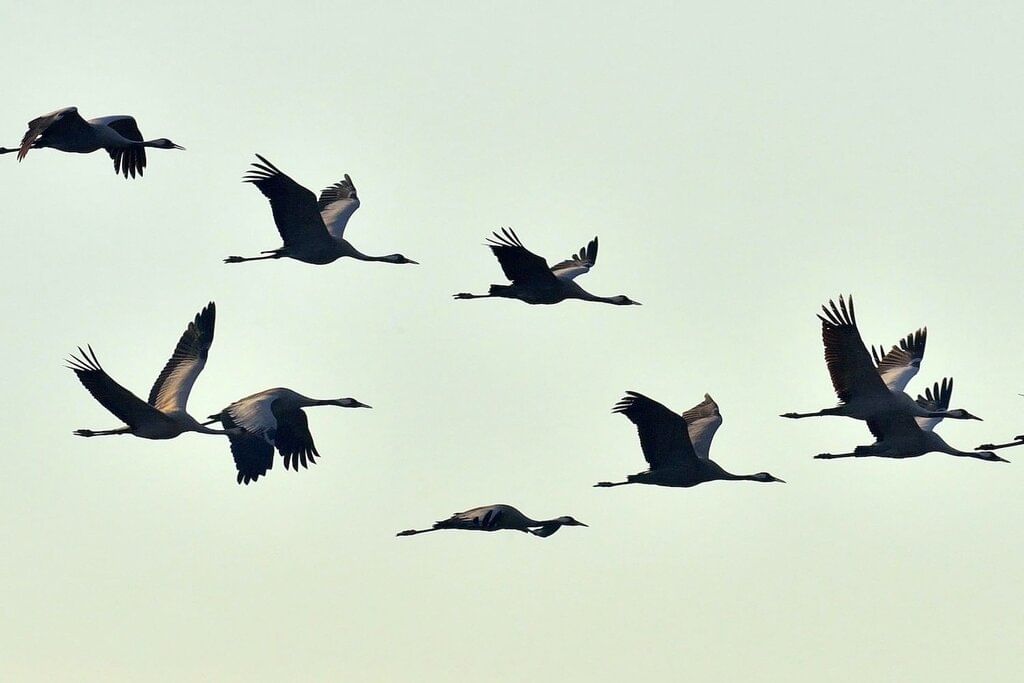 Migrator Birds
Migrator Birds
Short Answer Questions
Instruction: Answer the following questions in 2–3 lines.
Q1. How are biotic and abiotic components linked in an ecosystem?
Q2. Why does diversity in a habitat help maintain balance?
Q3. Explain the pond cascade when fish are removed.
Q4. How do mangroves protect coasts and climate?
Q5. Why can overuse of pesticides harm farms long-term?
Match the Following
Instruction: Match Column A with the correct option in Column B.
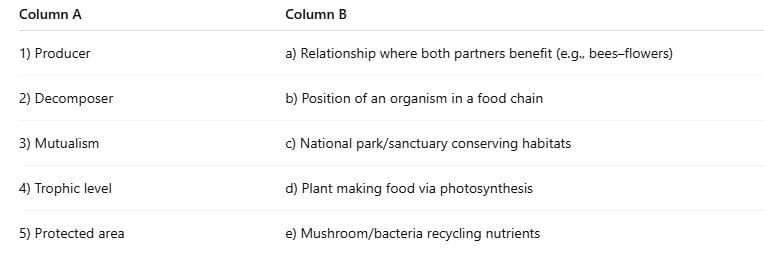
Check the solutions of the worksheet here.
FAQs on Worksheet: How Nature Works in Harmony - Worksheets with Solutions for Class 8
| 1. What are some examples of natural processes that demonstrate harmony in nature? |  |
| 2. How do humans impact the natural balance of ecosystems? |  |
| 3. Why is biodiversity important for the stability of ecosystems? |  |
| 4. What role do food chains and food webs play in maintaining ecological balance? |  |
| 5. How can conservation efforts help restore harmony in nature? |  |















